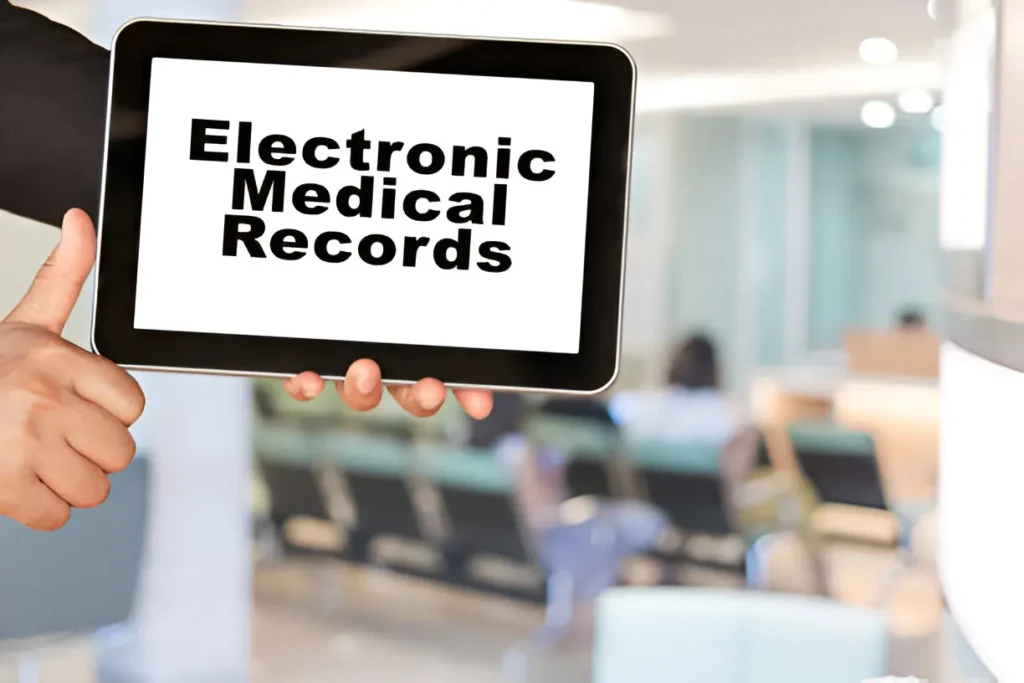Electronic Health Records (EHRs) play a crucial role in reducing medical errors and improving patient safety. By transitioning from paper-based systems to digital documentation, healthcare facilities have significantly decreased medication errors, diagnostic mistakes, and treatment complications.
Common Types of Medical Errors EHRs Address
Medical errors take many forms, from prescription mistakes to diagnostic oversights. EHR systems target the most frequent and dangerous types of errors through built-in safety mechanisms and automated checks.
Medication errors represent one of the most common and preventable categories of medical mistakes. These include prescribing the wrong drug, incorrect dosages, dangerous drug interactions, and medications that conflict with patient allergies. Traditional paper-based systems rely entirely on provider memory and manual cross-referencing, creating numerous opportunities for oversights.
Diagnostic errors occur when conditions are missed, delayed, or incorrectly identified. Poor communication between providers, incomplete patient histories, and difficulty accessing previous test results contribute significantly to diagnostic mistakes. Communication failures between healthcare team members also lead to treatment delays, duplicate procedures, and conflicting care instructions.
Documentation errors create cascading problems throughout the healthcare system. Illegible handwriting, missing information, and outdated records can lead to inappropriate treatments and missed opportunities for intervention. EHR systems address each of these error categories through systematic improvements in information management and clinical decision support.
Automated Drug Interaction Checks and Allergy Alerts
Electronic health records excel at preventing medication-related errors through sophisticated drug interaction databases and real-time safety checks. When providers enter new prescriptions, EHR systems automatically compare them against the patient’s current medications, checking for potentially dangerous combinations.
These automated systems screen for drug-drug interactions, drug-allergy conflicts, and dosing problems based on patient characteristics like age, weight, and kidney function. Critical alerts appear immediately when providers attempt to prescribe medications that could cause serious adverse reactions, giving them the opportunity to choose safer alternatives.
The comprehensiveness of EHR medication checking extends beyond prescription drugs to include over-the-counter medications, supplements, and herbal remedies that patients report. This complete picture of a patient’s therapeutic regimen enables more accurate safety screening than would be possible with incomplete medication histories.
Advanced EHR systems also track medication efficacy and side effects over time, alerting providers when patients might benefit from dosage adjustments or alternative therapies. This ongoing monitoring helps prevent both underdosing that reduces treatment effectiveness and overdosing that increases the risk of adverse reactions.
Clinical Decision Support Tools
Clinical decision support represents one of the most powerful error-prevention features of modern EHR systems. These tools analyze patient data against evidence-based guidelines and alert providers to potential problems or missed opportunities for intervention.
Diagnostic support tools help providers consider conditions they might otherwise overlook by analyzing patient symptoms, test results, and risk factors. These systems don’t replace clinical judgment but provide additional perspectives that can catch diagnostic errors before they impact patient care.
Treatment protocol reminders ensure that patients receive appropriate care based on their specific conditions and circumstances. For example, EHR systems can alert providers when diabetic patients need eye exams, when heart failure patients require specific medications, or when surgical patients need prophylactic antibiotics.
Laboratory and imaging result alerts prevent critical findings from being overlooked in busy clinical environments. EHR systems can flag abnormal results that require immediate attention and ensure that providers see important findings even when they’re managing multiple patients simultaneously.
Standardized Documentation and Legibility
Handwriting legibility has long been a source of medical errors, with misread prescriptions and illegible notes contributing to treatment mistakes. Electronic health records eliminate handwriting-related errors entirely through standardized digital documentation.
Structured data entry in EHR systems, supported by telemed software, ensures that critical information is captured consistently and completely. Required fields prevent providers from accidentally omitting important details, while standardized formats make information easier to locate and interpret across different healthcare settings.
Template-based documentation helps providers remember to address all relevant aspects of patient care while maintaining efficiency. These templates can be customized for different specialties and conditions, ensuring that specialty-specific considerations are consistently addressed.
Digital signatures and timestamps create clear accountability for all documentation changes, making it easy to track when information was entered or modified. This audit trail helps identify potential problems and ensures that all team members know when they’re viewing the most current patient information.
Real-Time Access to Patient Information
Medical errors frequently occur when healthcare providers lack access to complete, current patient information. EHR systems address this problem by making comprehensive patient data available instantly to authorized users across different locations and healthcare settings.
Emergency departments particularly benefit from immediate access to patient medical histories, medication lists, and recent test results. When patients arrive unconscious or unable to communicate, EHR access can mean the difference between appropriate treatment and dangerous medical errors.
Specialty consultations become safer and more effective when consulting physicians have complete access to patient information from primary care providers and other specialists. This comprehensive view prevents duplicate testing, contradictory treatments, and missed drug interactions between different providers’ prescriptions.
Laboratory and imaging results integrated into EHR systems ensure that test findings reach the appropriate providers quickly and reliably. Automated result routing eliminates the possibility that critical findings will be lost or delayed, reducing the risk that abnormal results will go unaddressed.
Care Coordination and Communication
Poor communication between healthcare team members contributes significantly to medical errors. EHR systems improve care coordination through integrated communication tools and shared care plans that keep all team members informed about patient status and treatment goals.
Secure messaging within EHR platforms enables healthcare providers to communicate quickly and efficiently while maintaining documentation of important care decisions. These messages become part of the permanent medical record, ensuring that important communications aren’t lost or forgotten.
Care transition documentation helps prevent errors when patients move between different healthcare settings or providers. EHR systems can automatically generate transfer summaries and care instructions that ensure receiving providers have all the information they need to continue safe, appropriate care.
Shift change communications benefit from structured handoff tools built into EHR systems. These tools ensure that important patient information is consistently communicated between providers and that nothing critical is overlooked during care transitions.
Quality Monitoring and Error Prevention
EHR systems generate data that healthcare organizations can use to identify error patterns and implement systematic improvements. This data-driven approach to error prevention represents a significant advancement over traditional incident reporting systems.
Real-time quality dashboards help healthcare leaders identify potential problems before they result in patient harm. These systems can track medication error rates, diagnostic delays, and other safety indicators across different departments and provider groups.
Trend analysis capabilities enable healthcare organizations to identify systemic issues that contribute to medical errors. By analyzing patterns in EHR data, organizations can implement targeted interventions that address root causes rather than just individual incidents.
Automated quality reporting helps healthcare organizations meet regulatory requirements while identifying opportunities for improvement. These reports can track compliance with safety protocols and identify areas where additional training or system modifications might reduce error rates.
Conclusion
EHRs have transformed healthcare by reducing medical errors and improving care quality. Proper setup, staff training, and leveraging safety features are key to maximizing their benefits. Emerging technologies like AI and machine learning offer even greater potential for enhancing patient safety.
Read more: Screw Compressors: The Silent Power Behind Modern Industry – Spiritual Meaning Portal
How Electrical Distribution Equipment Shapes Modern Infrastructure
How to Unlock Dark Matter Camo in BO6 – Step-by-Step Guide







